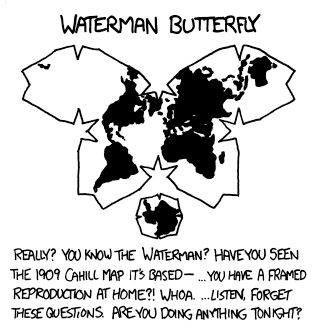I have Stremio+Torrentio set up on my deck, and use a PS5 controller for its trackpad since Stremio is very difficult to navigate with a controller. Still, the PS5 controller sucks in a lot of ways and I’d love to upgrade to this!
- 0 Posts
- 106 Comments
Sony added a screen to their controller to create a handheld, whereas Valve removed the screen from their handheld to create a controller.

 1·2 days ago
1·2 days agoThe same way you did, via the name of the member:
my_test.test2.b = 'x';The unnamed struct provides the type for a member named
test2. Doing it this way saves you the trouble of defining the struct externally and giving it a name. It’s identical to this, except in this example you can reuse the struct definition:struct crappyname { char b; float c; }; struct test { int a; struct crappyname test2; double d; };

 5·2 days ago
5·2 days agoLua is cozy, like a nice, warm dumpster fire.
I see, by PC you mean you don’t want a traditional ‘tower’ PC, which is perfectly reasonable. I personally consider anything within the umbrella of “PC gaming” to be a PC, including laptops (even Macbooks).
That’s a very strange opinion to read on programming.dev’s Linux Lemmy community
Ackshually, the meme is encoded using progressively smaller images nested into the fourth panel of the comic. Each fourth panel is effectively a nested function call to the original comic procedure, which more closely represents recursion than an infinite loop.
For an infinite loop, one might instead lay out the 3 unique panels horizontally, and just memcpy them into rows below, creating a table. That’s a regression in humor, but it’d fix the bug.
So I agree with @ryannathans@aussie.zone’s review; The joke is about infinite loops, but the visual gag is about recursion.

 3·3 days ago
3·3 days agoThat’s how I started. When I was 10 years old, I discovered game maker and accidentally gained a lifelong passion for programming.
not the computer wizkid, but the average one
I can assure you that 10 year old me was below average with computers. It’s a miracle I managed to figure out how to install gamemaker at all. The only thing that matters is interest, passion, and determination. If the child doesn’t have those things, they probably won’t succeed, and you probably can’t force them to, which is fine. It doesn’t mean they won’t become a software engineer in the future, just that they won’t do it at an early age. I know engineers who started learning programming in college, and are way smarter than me even though I had almost a decade head start.
EDIT: btw, I don’t know if I’d recommend gamemaker today. When I started with it, it was simple and specifically aimed at learning. Today, it’s trying to be a full-blown commercial game engine and it has gotten pretty complex. Another option might be Godot, but I’d strongly recommend against it. Godot is way too complex for someone’s first game engine. Some people like Scratch, but IMO it’s pretty lame and feels more like a homework assignment.
Some possible alternatives (haven’t used them myself):
Or just search for “no code game engine” in your favorite search engine. There are probably tons of those today.

 554·3 days ago
554·3 days agoEveryone knows that memory safety isn’t the only source of security vulnerabilities (unless you’re bickering about programming languages on the internet, in which case 100% of security vulnerabilities are related to memory safety)
Rust users are one of Rust’s biggest weaknesses.

 27·4 days ago
27·4 days agoThis fascist wave is really bringing out all the cockroaches in our society. It’s a good thing you can’t erase anything on the internet, as this type of evidence will probably be useful in the future.
You’d better get in on a crypto grift, Kelly Shue of the Yale School of Management. I suspect you’ll have a hard time finding work within the next 1-3 years.

 1·4 days ago
1·4 days agoYou can already do that in standard C like this:
struct test { int a; struct { char b; float c; } test2; double d; };I can’t think of any particular reason why you’d want an unnamed struct inside a struct, but you definitely would want to be able to have an unnamed struct inside a union. I suspect the struct-inside-struct thing can become useful in some scenarios involving unions.

 3·5 days ago
3·5 days agoIt’s not that convenient. I can’t even think of a situation where this would be useful for structs, only unions. And in the case of unions, you usually want to keep them as small as possible (or better yet, avoid them altogether).
But besides that, C is a language that tends to prefer minimalism. Using macros, you can accomplish a similar thing already, even if it’s not as nice.

 31·5 days ago
31·5 days agoBut how do you evaluate if people are unconsenting about an act before the act takes place? That’d be premature evaluation.

 2·5 days ago
2·5 days agoEurope has backyards?

 2·5 days ago
2·5 days agoThey were only in office for 4 years, and while they did a lot they couldn’t do everything.
Not everything is about politics.
No, but antitrust enforcement obviously is

 30·5 days ago
30·5 days agoWhat kind of work do you do? Every time I read stuff like this, I find it hard to believe, but maybe the code/languages/frameworks I’m using just aren’t as easy for LLMs as what other people are using. The results I’ve had trying to get it to write C++ have been atrocious.
I’m not against AI code assistance, and I like keeping an open mind. For the moment though, the only success I’ve had is with using it to explain some feature or API faster than manually looking up the documentation. But actually reading the docs, I’ve found, helps me remember things better.

 3·6 days ago
3·6 days agoyour user folder linked to one drive (so you’ll always have a backup) is also a cash-grab
That’s actually illegal bundling behavior, something they wouldn’t dare do if Biden was still president and Lina Khan was still head of the FTC.
I think actually that the future of Windows won’t be so dire post Trump. There’s no way the pro-monopoly brain rot survives this admin, and people will soon start to realize that the billionaires, although easy targets, are just a symptom of lax regulation rather than the root cause of the enshitiffication apocalypse of the mid 2020s.

 19·6 days ago
19·6 days agoForget the cloud. What if the ad is the operating system? Windows 12 will be using a distributed architecture, running on top of global ad networks. Every advertisement medium (TV, radio, web, video) will include an x86 interpreter that runs Windows services (ARM support will come later).
The same tracking tech used to target you with that ad will be used to log you in to your Azure Copilot 365 OneDrive account, so you can access your files and applications seamlessly without having to remember a password or pin. When your smart toilet is showing you an ad for Draft Kings to earn your flush credit, you’ll be able to check your emails, connect with the fam, or ask Copilot for assistance.

 742·6 days ago
742·6 days agoI’m sitting around doing IT shit waiting things to download/backup/install/etc and have nothing better to do, so here’s an AI-free explanation with code samples:
It’s basically just a code style thing. Standard C allows you to declare unnamed structs/unions within other structs/unions. They must be unnamed, so it’d look like this:
struct test { int a; struct { char b; float c; }; double d; };Which is fine, but the
-fms-extensionsflag enables you to do the same thing with named structs. For example:struct test { int a; struct test2 { char b; float c; }; double d; };without
-fms-extensions, the above will compile, but won’t do what you might assume.bandcwill be members of structtest2, nottest. So something like this won’t compile:struct test my_test; my_test.b = 1; // error: ‘struct test’ has no member named ‘b’But with the flag, not only does it work, it also lets you do some convenient things like this:
struct test2 { char b; float c; }; struct test { int a; struct test2; double d; }; //... struct test my_test; my_test.b = 1; //OKThat is, you can reuse an existing struct definition, which gives you a nice little tool to organize your code.
Source: https://gcc.gnu.org/onlinedocs/gcc/Unnamed-Fields.html

Even better